Classics on Vinyl from Warner Classics
f, in the dying days of the last century you would have predicted a vinyl resurgence, most people (especially audiophiles) would have dismissed you as an overly optimistic fantasist. Yet, it’s 2021 and LP sales are enjoying rude health, a matter of both amusement and bemusement to many, including me. Back then, the notion of seeing racks of new records awaiting sale seemed seriously unlikely, at least outside of specialist retailers or audio shows. But walk around my local Carrefour supermarket and that’s exactly what you’ll find -- a rack, three bins deep and four wide, overly stuffed with brand-new records covering everything from classic rock and mainstream jazz to the latest euro-trash club beats. These are not high-priced, uber-quality audiophile reissues but records that the general public might want to buy at prices they might actually want to pay. Okay, we're hardly reliving the record-sales heydays of the 1960s and ‘70s, but record labels have recognized that people want to buy music on vinyl and they are increasingly willing to offer it.
Of course, it is important to understand what the offer is here. These are not audiophile reissues lovingly cut from archaeologically unearthed analog tapes. Although details of provenance and production are almost nonexistent, these records will probably have been pressed from the same digital files used to produce CDs, and Warners make no claims for special treatment of the tape. These records are not going to stand comparison with the best original pressings. But they are new, pristine and available discs of great performances at very approachable prices. They may not sound like near-mint original pressings, but they won’t cost like them either. That’s the beauty, especially once you look at the release list.
What can you expect from these discs? Well, to start with, they are flat and generally quiet. A couple of the discs I have exhibit some surface noise, but it is generally mild or well separated from the music. The sleeves and boxes are nicely produced, with decent graphics and sensible notes where appropriate. I would rate them all as better than expected on these counts, with some (notably the boxed sets) being genuinely excellent. Sonically there’s always going to be some variation. I selected a spread of discs and material as examples to illustrate both the qualitative variation and the appeal of these releases.
Starting in the obvious place -- the Elgar Concerto -- the sound is bold, dynamic and rich, but lacks the absolute immediacy, separation, depth and expansive soundstage of the best (and most expensive) original pressings. No surprise there, but let’s not dismiss this record, a disc that captures the purpose, energy and drama that made du Pré’s performance so compelling. You’ll need to pay attention to VTA (something that’s true of all these discs), but get it right and the Warner Classics release will match most of the late pressings and reissues out there, which is no mean feat at this price. The almost electrifying immediacy and transparency of the first releases may have been diluted and smoothed over (probably by the digital processing), but this remains a dramatic and thoroughly enjoyable performance. The other discs vary in terms of both recording and performance and, for instance, I wouldn’t take du Pré’s Dvorak over a decent pressing of either the Starker or the Piatigorsky (or indeed the underrated Rostropovich on Deutsche Grammophon Gesellschaft, if you have access to a Teldec curve), but even the repressings of those discs come in at a premium price -- and they vary in quality too. As an introduction to the core cello repertoire, this box is hard to beat, and you can always seek out different performances or pressings of those works you consider worthwhile. When it comes to core repertoire, you don’t get much more significant than the Bach Cello Suites. This Rostropovich reading, recorded in 1991 and previously only available on CD, is pressed onto four LPs, presented with excellent notes and packed in a suitably classy box. The sound here is excellent, the character of the original digital recording perfectly suited to the range and power of the solo instrument. Rostropovich demonstrates his easy mastery of both the instrument and the score, with the readings of Suites 1, 5 and 6 being particularly impressive (the latter two each receiving an entire LP to themselves). This performance is simply superb and this boxed set need make no apologies to anyone. I can’t find a US price for it, as it is currently (unsurprisingly) sold out, but it was due for re-release at the end of March, and based on Euro pricing I’d expect it to cost a little less than the du Pré set -- making it an absolute bargain that every serious classical collector or newbie should own.
Saving the best for last (in musical terms at least) it is perhaps ironic that the two "best" or at least most compelling performances here are both historical in nature. Ginette Neveu died tragically young, in an air crash in 1949 at the age of 30, a short career further curtailed by World War II leaving few recordings to preserve her reputation. These pieces (Chausson’s Poème, The Debussy Sonata in G and Ravel’s Tzigane) were recorded, like her others, for EMI/HMV and date from 1946 and 1948. Warners has done an excellent job of restoring/preserving the character and quality of these 78rpm recordings, delivering decent bandwidth and (comparatively) low noise. But it’s the playing of the soloist that matters here -- and that is captivating. As with Camilla Wicks, who followed a few years later, the playing here is simply superb -- poised and purposeful, dynamic and authoritative, generating astonishing drama and emotional, power from what is after all a tiny instrument. Fabulous playing in a nicely curated release, this is a must buy.
Unlike most symphonic cycles, this one is not a single series of specific performances, but is assembled from recordings made between 1948 and 1954 and features the same recordings as the earlier EMI box. The main orchestra is the Weiner Philharmoniker, recorded in the Musikvereinssaal, notable exceptions being two live recordings (the 8th with the Stockholm Philharmonic and the all-important 9th, with the Chorus and Orchester der Festspiele, Bayreuth, recorded at the post-war reopening concert). Recording quality is variable here, but what is not in question is the quality of the transfers or the performances. Furtwängler might have a reputation for relaxed tempi -- certainly compared to more modern exponents like Kleiber or Norrington -- but his grasp of pace and rhythm is flawlessly contiguous, his undemonstrative direction allowing the music its own voice and expressive compass. The results are as engaging as they are listenable and just as with the Neveu, Warners has done a superb job of curating this material. Each symphony receives its own disc, with two for the 9th, making for a 10-disc set that ensures maximum available dynamics. The box itself is nicely (and tastefully) presented, although the booklet is somewhat basic and a little disappointing -- although at this price it seems churlish to complain. Along with the Neveu disc, these records make a strong case for mono reissues and, having been cut with a stereo cutting head, there’s no need to use a mono cartridge to get the best performance from them. It’s a real musical treat to have the Furtwängler Beethoven symphonies not just available but available in a single box -- and to have records as nicely produced as these. They go well beyond "must buy" into "Why wouldn’t you?" territory, lodged as they are firmly in the no-brainer, musical-indulgence category. It’s this availability that makes the Warner
Classics vinyl releases so interesting: serious (and occasionally offbeat) music
selections from first-rate musicians, presented at extremely approachable prices. Whether
you are building a classical collection from the ground up or simply filling out already
well-stuffed shelves, you’ll find something appealing here, from the comprehensive
selection of du Pré and Callas discs to the Furtwängler Beethoven Symphonies. If Warner
Classics had released nothing else, that last box alone would still have made the effort
worthwhile. As it is, they continue to issue both interesting current recordings and
historically significant ones that are well worth considering. |

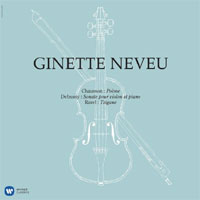 The one thing that’s been missing from those record racks in
Carrefour, at least until recently, has been classical music. But that is changing. Warner
Classics -- a conglomerate that controls the EMI, Erato and Teldec labels -- has been
issuing current recordings from the likes of Beatrice Rana and Gautier Capuçon, Angela
Ghorghiu and Fazil Say on 180-gram vinyl. Even more interesting, they’ve started to
work their way through some of the more interesting recordings sitting idle in their back
catalogue. But most interesting of all are the prices they are asking for these discs --
individual albums go for around $20, with boxes often working out at nearer $10 a disc.
The one thing that’s been missing from those record racks in
Carrefour, at least until recently, has been classical music. But that is changing. Warner
Classics -- a conglomerate that controls the EMI, Erato and Teldec labels -- has been
issuing current recordings from the likes of Beatrice Rana and Gautier Capuçon, Angela
Ghorghiu and Fazil Say on 180-gram vinyl. Even more interesting, they’ve started to
work their way through some of the more interesting recordings sitting idle in their back
catalogue. But most interesting of all are the prices they are asking for these discs --
individual albums go for around $20, with boxes often working out at nearer $10 a disc.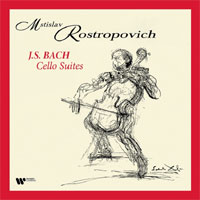 With
around 70 titles currently on offer, there’s the obligatory selection of “Music
from the Ads” and “Classical Greatest Hits” collections, but there are also
really worthwhile recordings from great musicians, like Jacqueline du Pré and Itzak
Perlman, Maria Callas and Pablo Casals. You’ll find the Oistrakh/Rostropovich/Richter
Beethoven Triple Concerto (with Karajan and the Berliner Philharmoniker) and the
Barbirolli/Philharmonia Enigma Variations, the Gilels Beethoven Piano Concertos
(with Szell and the Cleveland) and the Previn ballets (Sleeping Beauty, Romeo
and Juliet and Swan Lake). But the pick of the crop has to be the choice of
Bach Cello suites from Casals or Rostropovich, rare recordings from Martha Argerich
(Chopin) and Ginette Neveu (Debussy, Chauson and Tzigane) and, perhaps best of all, a
complete set of Beethoven symphonies from Furtwängler.
With
around 70 titles currently on offer, there’s the obligatory selection of “Music
from the Ads” and “Classical Greatest Hits” collections, but there are also
really worthwhile recordings from great musicians, like Jacqueline du Pré and Itzak
Perlman, Maria Callas and Pablo Casals. You’ll find the Oistrakh/Rostropovich/Richter
Beethoven Triple Concerto (with Karajan and the Berliner Philharmoniker) and the
Barbirolli/Philharmonia Enigma Variations, the Gilels Beethoven Piano Concertos
(with Szell and the Cleveland) and the Previn ballets (Sleeping Beauty, Romeo
and Juliet and Swan Lake). But the pick of the crop has to be the choice of
Bach Cello suites from Casals or Rostropovich, rare recordings from Martha Argerich
(Chopin) and Ginette Neveu (Debussy, Chauson and Tzigane) and, perhaps best of all, a
complete set of Beethoven symphonies from Furtwängler.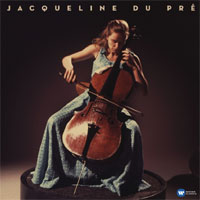 The five-disc du Pré
box is an obvious place to start, featuring, as it does, not just the legendary Elgar
Cello Concerto (with Barbirolli and the LSO) but concertos from Dvorak, Haydn, Boccherini,
Schumann and Saint-Saëns, along with the Elgar Sea Pictures, Dvorak Silent
Woods and the Strauss Don Quixote (never previously available on vinyl), all
nicely presented in a beautifully finished slipcase for a little over fifty bucks.
The five-disc du Pré
box is an obvious place to start, featuring, as it does, not just the legendary Elgar
Cello Concerto (with Barbirolli and the LSO) but concertos from Dvorak, Haydn, Boccherini,
Schumann and Saint-Saëns, along with the Elgar Sea Pictures, Dvorak Silent
Woods and the Strauss Don Quixote (never previously available on vinyl), all
nicely presented in a beautifully finished slipcase for a little over fifty bucks.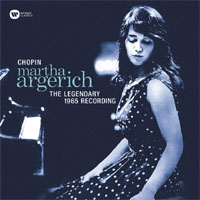 Another performance previously only available on CD, Martha
Argerich recorded this Chopin selection (Sonata No.3 and six short works) for EMI at Abbey
Road, shortly after her triumph in the 1965 Warsaw International Chopin Competition. Prior
commitment to Deutsche Grammophon meant that this recording didn't appear until 1999,
although it was always rumored to offer superior sound and a better performance than the
German label’s take of the same repertoire. Supporting that view, the sound here
matches the solid presence and rich tonality of the Rostropovich discs, giving full range
to the young Argerich’s sheer dexterity, fluid lines and explosive dynamics. The
instrumental perspective is again up close and personal, making for a dramatic and
uninhibited performance that’s full of emotional and musical impact. This is a record
that will be welcomed by all Argerich fans -- and might well win her some new ones.
Another performance previously only available on CD, Martha
Argerich recorded this Chopin selection (Sonata No.3 and six short works) for EMI at Abbey
Road, shortly after her triumph in the 1965 Warsaw International Chopin Competition. Prior
commitment to Deutsche Grammophon meant that this recording didn't appear until 1999,
although it was always rumored to offer superior sound and a better performance than the
German label’s take of the same repertoire. Supporting that view, the sound here
matches the solid presence and rich tonality of the Rostropovich discs, giving full range
to the young Argerich’s sheer dexterity, fluid lines and explosive dynamics. The
instrumental perspective is again up close and personal, making for a dramatic and
uninhibited performance that’s full of emotional and musical impact. This is a record
that will be welcomed by all Argerich fans -- and might well win her some new ones.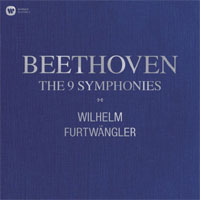 Furtwängler’s approach to the Beethoven symphonies was as
central to his musical worldview, as it is legendary and these recordings would ideally be
equally central to any serious classical-record collection. Except that, until now,
availability has been limited to myriad separate reissues of variable and often dubious
quality. The better the disc (and some, notably those from The Furtwängler Society are
better than others) the more they cost, with the price/rarity curve being seriously steep.
EMI France did actually produce a 13-disc boxed set in the ‘70s that made getting the
major works all in one place a possibility, but I’ve never seen one and I have no
idea as to its quality. All of which makes this Warners boxed set an especially welcome
release.
Furtwängler’s approach to the Beethoven symphonies was as
central to his musical worldview, as it is legendary and these recordings would ideally be
equally central to any serious classical-record collection. Except that, until now,
availability has been limited to myriad separate reissues of variable and often dubious
quality. The better the disc (and some, notably those from The Furtwängler Society are
better than others) the more they cost, with the price/rarity curve being seriously steep.
EMI France did actually produce a 13-disc boxed set in the ‘70s that made getting the
major works all in one place a possibility, but I’ve never seen one and I have no
idea as to its quality. All of which makes this Warners boxed set an especially welcome
release.